The monsters in the granny flat
For days, Omar al Kutobi and Mohammed Kiad have been planning mass murder. They have no idea how badly it will end.

On a bright sunny afternoon in February 2015, an Iraqi refugee and a Kuwaiti nurse walk into a disposal store in Smithfield, in Sydney’s west. For days, Omar al Kutobi and Mohammed Kiad have been planning murder. They have carefully researched their purchase. They have selected a target. They have even consulted their Islamic State controller for technical advice on how to carry out the operation. (“The first hit is the lethal one. Keep calm during execution.”)
At 3.18pm the men enter Peter’s Military & Camping store. Pausing briefly to inspect a large machete on display in an open cabinet, they settle on a gleaming silver 18cm-long hunting knife with a curved blade and serrated teeth. Curious, an employee of the store asks the men where they are from. “Camden,” says al Kutobi, the Iraqi. “We’re going with mates to Melbourne to do some deer hunting.”
An hour later, both men are under arrest. Armed police from the NSW Police Tactical Operations Unit are combing through the men’s Fairfield granny flat. The intelligence services of at least two countries are trying frantically to paint a picture of the men. Prime minister Tony Abbott is preparing to stand in Parliament and denounce this latest example of Islamic State’s “monstrous extremism”. Inside the house, police discover a treasure trove of extremist material — knives, homemade napalm, a machete, an Islamic State flag. Even a martyrdom video, recorded moments before their arrest: “…today God willing, we will execute the first operation for the soldiers of the Caliphate in Australia …”
Terrorism investigations used to take months, even years. This one takes barely longer than a single detective’s shift. Operation Castrum, as the job comes to be known, happens so fast that police barely have time to assign it a codename.
Inside a nondescript commercial skyscraper situated towards the scruffier end of Sydney’s CBD is the most high-pressure office in the land. The workers here, police mostly, are monitoring in real time suspects who may be plotting a terror attack. These are the people keeping Australians safe. The Weekend Australian Magazine has been given rare insight into the workings of the Joint Counter Terrorism Team, which, due to the rise of Islamic State, is now one of the largest criminal commands in the country.
Across Australia, police are currently investigating about 70 terrorism plots. In 2011, that figure was 12 in NSW plus a handful in the other states. Bombers, stabbers, shooters, Muslim extremists bent on fighting in Syria, the JCTT hopes to get them all. Beyond that, hundreds of Australians are being quietly monitored by ASIO. Most will drift off the radar, others will move swiftly toward its centre. For our counter-terrorism services, the art lies in knowing the difference.
Modern terrorism has changed the way police work. Instead of investigating crime, they must stop it before it happens. The definition of success is not a crook before the court facing a mountain of evidence painstakingly gathered over months of careful investigation. It is a 16-year-old schoolboy arrested moments before he walks into a shopping mall armed with a bayonet and an iPhone.
In NSW, catching this new breed of criminal is the job of the JCTT, a sprawling multi-agency taskforce made up of the Australian Federal Police, ASIO, NSW Police and NSW Crime Commission. The JCTT model is replicated in every state across Australia, but the NSW office, located in the AFP’s Goulburn Street building, is the biggest. For the past year it has been festooned with hulking concrete crash barriers and armed protective service officers who check the ID of every visitor. Cops don’t like to make a fuss of it, but police are now the target of choice for jihadists. The humourless security guards outside the AFP are a grim but reassuring sign police are doing their job.
It was here that Detective Chief Inspector Darren Sly first heard of Mohammed Kiad and Omar al Kutobi. Sly is a 28-year veteran of the NSW Police Service. Things have changed since he joined the cops in 1989 but homicide detectives are still the top of the tree and that is where Sly made his bones. A tall, imposing man with cropped light-brown hair and a broad accent, it’s difficult to imagine him as anything but a cop. Since 2008 he’s been with the NSW JCTT, where he is a senior investigator.
The burden these kinds of jobs place on police resources is massive: high-risk targets must be watched constantly and by police who are armed. Lower-risk targets might be assigned “lights on, lights off” coverage, but their phones, emails and messages must be monitored in real time. If the conversation is in Arabic it must be translated and if police plan to use it in evidence it must be transcribed. Staff from the AFP’s Telephone Intercept Division monitors calls from the AFP’s headquarters in Canberra or from the AFP’s Sydney HQ where they are embedded with detectives working the job. They are civilians, although they know their targets as well as any detective. “Anyone says they’re off to Bunnings, alarm bells start ringing,” says one senior counter-terrorism officer.
Terrorists aren’t like other crooks, Sly adds. They don’t down tools when they think police are watching. “That’s the pressure on us,’’ he says. “We know we can’t deter them. You’ve just got to stop them.’’
Around lunchtime on February 9, 2015, Slygot word the ASIO liaison officer assigned to the JCTT wanted to speak to him. The two made their way towards the secure conference facility ASIO uses to share top-secret information. The Vault, as it is called, is a windowless room impenetrable to surveillance. It contains encrypted phone lines and secure communication links ASIO uses to transmit intelligence to the police. Only a handful of police are cleared to enter it. Phones, smart watches, any kind of electronic devices are forbidden. Apparently it has great lollies. Over the next half-hour, ASIO briefed Sly on al Kutobi and Kiad, two Middle-Eastern-born nationals who until recently had been of only passing interest to ASIO and were completely unknown to Sly and his team.
“The information was very basic,” Sly says. “There are two people, al Kutobi and Kiad, who had what was believed to be a plan to either burn or set some small incendiary device to start a fire at a small Shia prayer hall at Granville [in Sydney’s west]. For some reason they didn’t proceed with that attack. From there, the information was that they were now going to attack a police station or police officers.”
There was more. Through an informant ASIO had learnt the men had put a time frame on their attack. Four days. Sly’s team had until Friday to prevent what on all accounts looked to be a deadly terrorist act against their own. Sly’s first act was to dispatch an armed surveillance team to locate the men and box them in. “We didn’t know a great deal about them,” Sly says. “The best coverage we could put on them was physical surveillance. We sent them to the field straight away.”
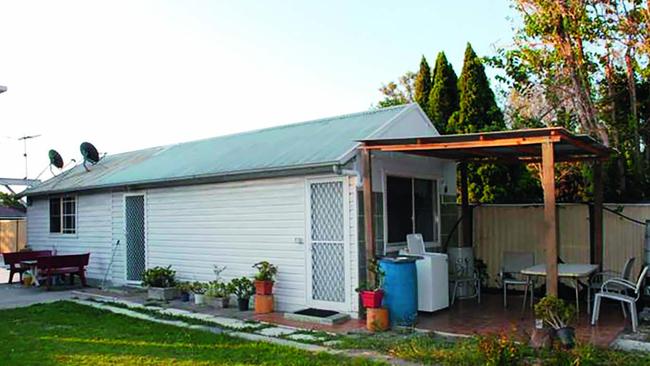
The pair were found at the converted garage they shared in Riverview Road, Fairfield. Both were relatively new arrivals to Australia. Al Kutobi was an Iraqi refugee whose family had been driven into Syria by war when he was a teenager. The family moved to Cyprus, then to Germany. In May 2009, al Kutobi boarded a plane bound for Australia using a fake passport. He seems to have come alone. Two months after he arrived, he was issued a refugee visa. He was 18.
Mohamed Kiad arrived later, in January 2012. He came for love, or at any rate for marriage. Kiad was a Kuwaiti, one of nine children descended from Bedouins — considered third-class people in Kuwait. They are not eligible for citizenship, they are barred from employment and they are routinely discriminated against. Kiad trained as a nurse but was unable to find work, apparently due to his suspect ancestry.
Neither man fared well in Australia. Al Kutobi suffered depression, post-traumatic stress disorder and low-level drug addiction. His family’s experiences in war-ravaged Iraq had left him with what his sentencing judge, Peter Garling, would later describe as “significant resentment”. Australia disappointed him. “Mr al Kutobi was generally unable to fulfil his aspirations whilst in Australia,” Justice Garling said.
Kiad, too, had hoped for more from Australia. Already feeling marginalised and alienated in his home country, he had hoped that moving here would improve his lot. It did not. His arranged marriage failed, his residency was revoked and, like al Kutobi, he became reliant on cannabis. He spoke no English. Al Kutobi was his only friend.
By 2pm Monday, February 9, 2015, officers from the surveillance unit had located the men. The officers had a brief to arrest the pair if an attack looked imminent, but Sly was reluctant to send them in. ASIO had done some work on the men but there was no “pattern of life”. Who were their associates? Were they part of a wider cell? Did they have weapons? Training? “They were literally unknowns,” Sly says. By now the men were under around-the-clock surveillance. The Local Area Commander at Fairfield Police Station had been told an investigation was afoot. The Tactical Operations Unit was ordered to be on standby. Two hours in and already the job was running at full pace.
But beneath all that, something unusual was happening. Unbeknown to the police, ASIO had been using an informant to get information on Kiad and al Kutobi. Tarek, as we will call him, was a Syrian national who now lived in the West. Tarek had formed an online relationship with a second Syrian, codenamed Rahman, still in Syria. It was an unlikely pairing. Tarek was a flag-waving Syrian patriot who would do anything for his country. Rahman was an opportunist who was feeding information on Kiad and al Kutobi to Tarek. He believed Tarek was a spy or a cop and his plan was to inform on the two men in the hope of claiming a reward.
Al Kutobi first made contact with Rahman on Facebook four months earlier, apparently believing the Syrian was an Islamic State recruiter. It may or may not have been true. On January 1, al Kutobi sent Rahman a message on WhatsApp, the encrypted messaging service. “We ask Almighty, Lord of the Throne, to enable us to see the Masters of the Caliphate, and to be truthful soldiers … We ask God to accept our bodies in redemption to God’s pleasure …”
Police believe al Kutobi’s and Kiad’s original plan was to join Islamic State with Rahman’s help. In the months leading up to February there was a flurry of messages between Sydney and Syria. “Tell [the brothers] the youngest people send their regards, as for our beloved Sheikh and Commanders of the Believers, we have no one else and he should not expect from us anything less than quenching the land with the blood of tyrants, and we pledge our allegiance to him,” al Kutobi wrote.
Kiad and al Kutobi talked with Rahman about flying to Syria. Logistics were discussed, dates canvassed. At one point al Kutobi texted a picture of his passport to Rahman, apparently as proof of his resolve. It would be passed to Tarek and then to ASIO, which would use it to positively identify al Kutobi. But the journey never happened. Both men were stone broke.
Instead, by late January, Kiad and al Kutobi had decided to conduct an attack in Australia. Guided by Rahman, they began acquiring materials for an improvised explosive device: nail-polish remover, an electricity measuring device, matches, firecrackers and a syringe, as well as black fabric and paint for an IS flag. Targets were discussed. Their first choice was “an infidel temple” — a Shiite prayer hall in Granville. Three days before their arrest the men scouted the hall, apparently with the idea of bombing it with homemade napalm. But it never happened, al Kutobi later telling Rahman they were surprised by police as they approached the hall.
The plan was discarded in favour of a more ambitious target: to attack a police station and kill a police officer. On the morning of February 9, a day before the men’s arrest, Rahman had information for Tarek: a new operation was in the works. ASIO, which had been monitoring the men, finally decided to tell the police. The next morning Rahman texted Tarek: “I’m talking to the boys now and they are telling me about the new operation.”
Things were moving quickly now. From Syria, Rahman helped script the pair’s martyrdom video and plan the attack. A four-point WhatsApp message instructed the men what to do. “1 — Wear gloves on your hands. 2 — The first hit is the lethal one. 3 — Keep calm during execution. 4 — The operation should not take more than a minute.” Rahman signed off with an instruction to send a video of the killing, which the pair believed would be used for propaganda purposes.
Sly was settling down to lunch at his desk on February 10 when Rahman sent Tarek a picture of the handwritten sign the Sydney pair had prepared that morning. It read: “We are the soldiers of the Islamic State. We are the lions of jund al khaliafa. We are here to cut your heads.” The picture was followed by a short message: “The lions will depart to carry it out in a few hours.”
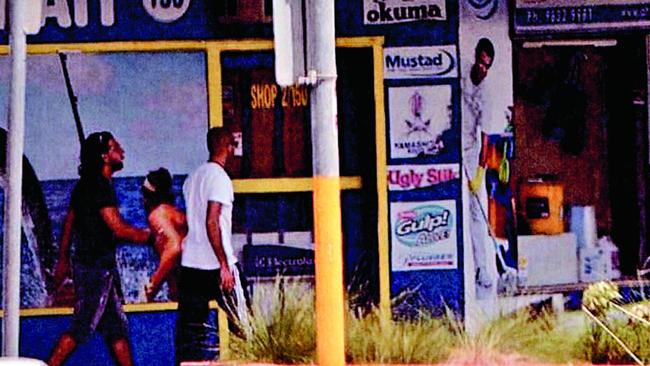
The news shocked Tarek. He still thought the attack was four days away but Kiad and al Kutobi were already on the move. They prayed, filled the car with petrol and at 3.13pm entered the camping and military disposal store in Smithfield as the surveillance officers across the road watched on. Five minutes later, while still in the car, Kiad took a picture of al Kutobi holding the knife.
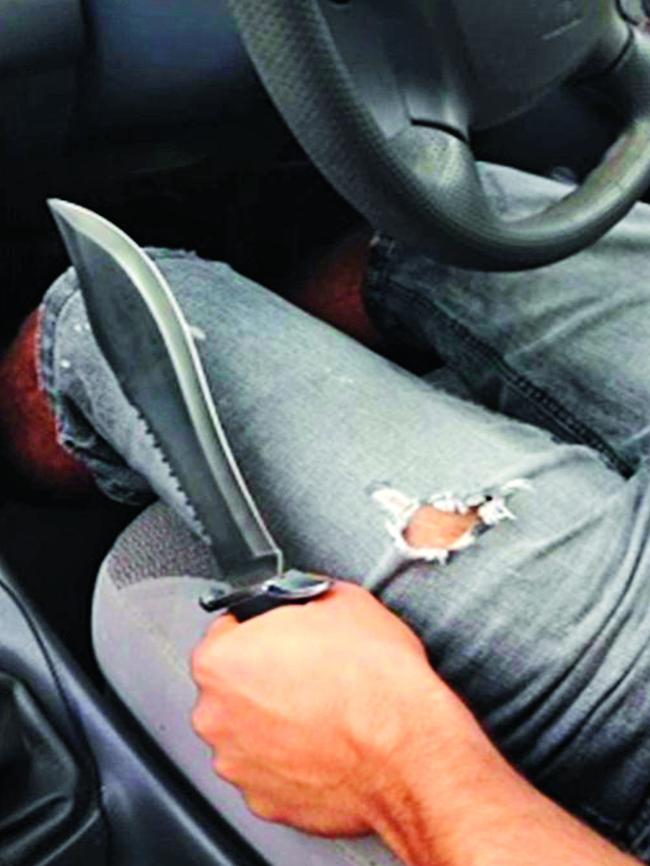
“I wasn’t feeling real comfortable at that stage,” Sly says. “We’ve gone from zero to 100 in a pretty quick fashion … We needed to act straight away.” Sly had a choice: either wait till the men got home and have the tactical team kick in their door, or order the surveillance officers to intervene now. He still had no idea what was in their house, their car or what other weapons they had. The job had unfolded so fast there had been no time to bug their phones, their car or their home. Sly decided to hold his nerve. “It was a close call,” he confesses.
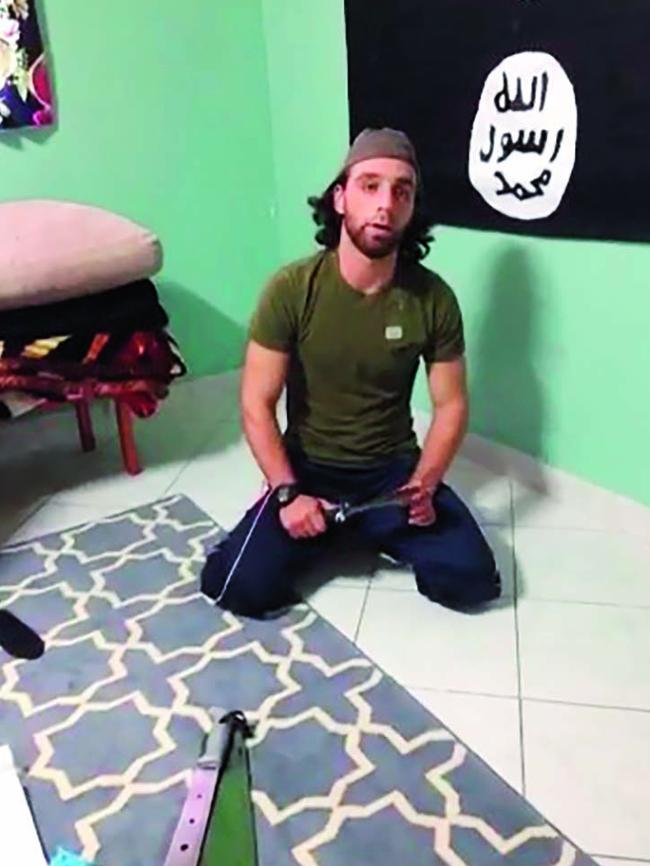
At 3.59, al Kutobi knelt on the floor of their Fairfield home. Behind him was the homemade Islamic State flag he and Kiad had made with paint, fabric and an IS-inscribed stencil downloaded from the internet. In front of him was Kiad, who was holding a phone. Kiad pressed record. “In the name of God the Merciful. Praise be to God. Lord of the World. Prayer and peace be upon the master of all messengers Mohammad, son of Abdullah and his good and divine family and companions. Now them, I swear to God, brother today God willing, we will execute the first operation for the soldiers of the Caliphate in Australia, God willing. I swear to God …”
On it went. When it was done they sent the martyrdom video to Rahman, who asked how long it would be until they launched their attack. Kiad replied, “God willing is at eight o’clock after Maghreb prayers.” To fortify themselves they played a video of Islamic State burning alive the captured Jordanian pilot Muath al-Kasasbeh. It was still playing when police stormed through the door a few minutes later.
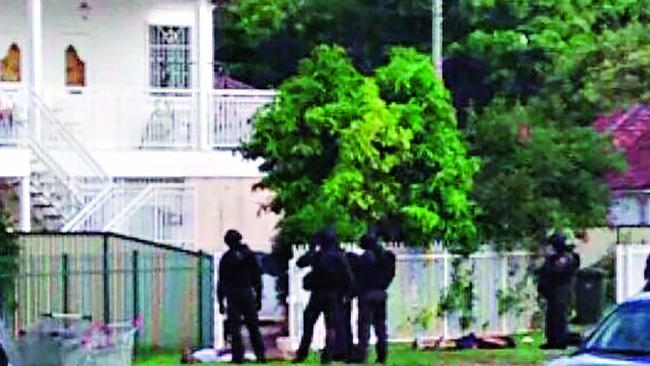
Since September 2014 there have been 12 Islamic State-inspired terror plots in Australia. Most have failed. Five got through: the 2014 stabbing attack by Melbourne schoolboy Numan Haider, the Lindt cafe siege in Sydney, the IS-inspired stabbing rampage of Ihsas Khan in Minto, Sydney last year, the murder in June this year of Melbourne hotel clerk Kai Hao and the 2015 murder of Sydney police accountant Curtis Cheng by 15-year-old schoolboy Farhad Jabar.
Police took that last one hard, not just because Cheng was one of their own. For months they’d been watching the cell that put the gun in Jabar’s hands and sent him marching towards Parramatta Police Station. They knew they were planning an attack. They knew they were trying to acquire firearms. What they didn’t know was the plan involved using a jahil, a dupe.
Operation Castrum was lightning fast. Most anti-terrorism jobs take longer. The Appleby investigation into a cell of Afghan extremists who plotted a series of attacks in Sydney began in 2014 and ran for two years. Peqin, the job that sprang out of it, ran for four months. Mostly the plots have followed a predictable pattern: low-skilled rudimentary assaults using crude weapons, like knives or cars. Then came the alleged attempt in August by Sydney-based radicals to down a passenger aircraft using plastic explosives sent via air cargo from Syria. Overnight, police were forced to revaluate what they thought were the predictable trend lines of Islamic terrorism.
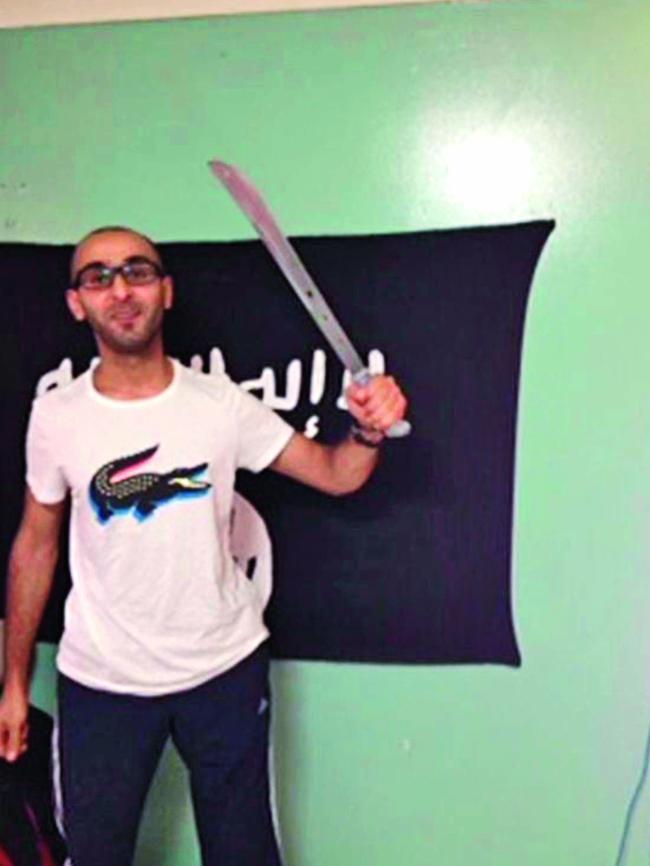
The amateurish nature of modern terrorism conceals the enormous burden it places on the security services. Terror suspects need to be watched constantly. The NSW JCTT comprises about 140 officers. Overwhelmingly they are detectives drawn equally from the AFP and NSW Police. Throw in the combined resources of ASIO, the NSW Crime Commission and the Australian Criminal Intelligence Commission and it is the largest criminal command in the state.
The AFP doesn’t like to say it but the fact is that since IS declared its caliphate in 2014 and supercharged extremism in Australia, drugs, fraud and money-laundering jobs have all taken a back seat. Terrorism is the main game. ASIO is no different. According to some insiders, around two-thirds of the organisation’s resources are now aimed at terrorism. Whatever’s left over is given to counterespionage, foreign interference and ASIO’s other duties. The rise of Islamic State has been a bonanza for Chinese spies.
ASIO’s contribution to the JCTT is information. It runs a vast network of informants in the Muslim community. For all the talk about needing to keep Muslim Australia onside in order to fight terrorism, most of ASIO’s information comes from paid informants. Its intelligence officers are also experts at leveraging the dozens of grievances, rivalries and grudges that ferment constantly within Australia’s Sunni Muslim community. The quality of their intelligence is said to be very good.
The NSW Police, the AFP and the NSW Crime Commission also run informants. The rise of encryption technology has made human sources more valuable than ever to terrorism detectives. The information they gather is shared but the people are not, although there are exceptions. During Operation Castrum, ASIO disclosed Tarek’s identity to police so that Sly and his team could gather the photos, text messages and other documents they would need to convict Kiad and al Kutobi. That used to be rare, but these days ASIO is much more amenable to turning intelligence into evidence.

ASIO also collects a huge quantity of intercepted data — bugged phone calls, emails, conversations recorded with hidden listening devices. Unlike police, ASIO is concerned with what might happen, not what has, so the emphasis on surveillance is greater. In practice, though, they are not much different. Many is the time police have kicked in a door armed only with suspicion and the skinniest of briefs. “In the terrorism world it’s about risk to the community first, putting a brief around someone second,” Sly says.
All counter-terrorism jobs rely heavily on monitoring. A typical surveillance team comprises more than half a dozen officers. They are both evidence-gatherers and bodyguards to the public. One surveillance team will watch one target. During the Appleby investigation police had more than a dozen suspects under surveillance, all of them considered dangerous. The JCTT’s monitoring room was running 24 hours a day. Over time their targets got smart. They discovered and confronted surveillance teams. They lashed out at members of the public they believed were following them.
For all that, terrorists are bad crooks. They talk on phones they know are bugged. They write notes to evade listening devices and leave them lying around. When police raid their homes they usually find what they’re looking for. When police raided al Kutobi and Kiad they found a wealth of evidence. “It was gold,” says Sly.
Most terrorists are young. The average age of accused extremists inside NSW’s SuperMax prison is 21. That’s no accident. Everything about Islamic State is designed to appeal to the young — it is brash, reckless, showy and impatient. It pumps out millions of messages via social media. They are all variations on one theme: we have built the caliphate; you can either join it or serve its cause by killing at home. That’s another thing Islamic State has changed. By putting battle-hardened extremists in instant contact with callow young men willing to do their bidding, it has globalised terrorism.
Operation Castrum unfolded across three different continents in two different time zones in the space of just 24 hours. In the end it was a successful job. Kiad and al Kutobi both received minimum sentences of 15 years. They now languish inside the SuperMax prison alongside every other extremist arrested in NSW. But it was a near run thing. Sly shakes his head when he thinks about it. “It’s not over there, it’s here.”
